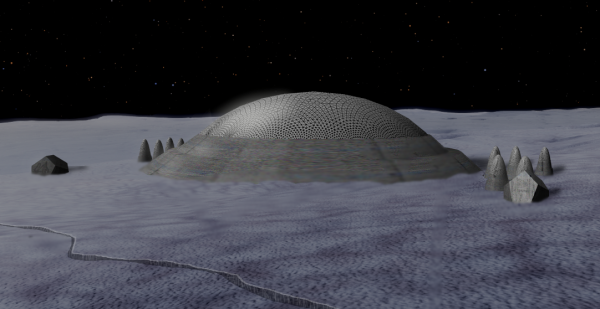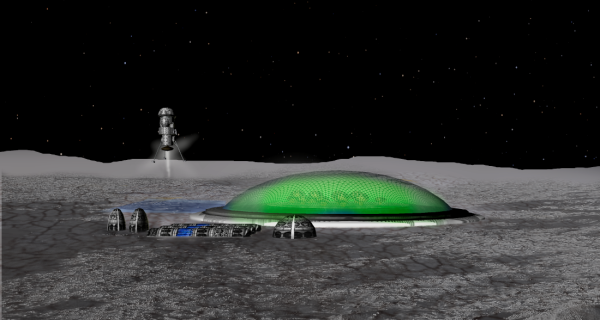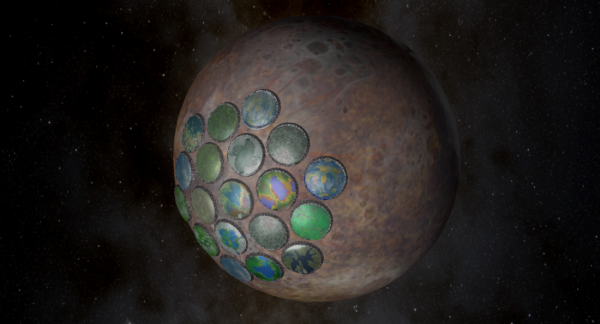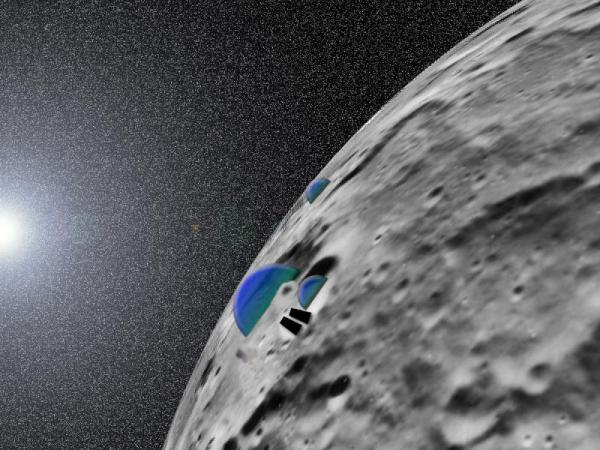BY LETTER
Dome Habitats
Technology > Application > Envirotech
Technology > Application > Infrastructure
Technology > Application > Megascale Engineering
Technology > Application > Infrastructure
Technology > Application > Megascale Engineering
 Image from Steve Bowers | |
| Tereshkova Dome on Tethys, Interplanetary Age | |
 Image from Steve Bowers | |
| Poreat Dome Habitat in the Surga System | |
On a slowly-rotating world, the day-night cycle may inhibit or prevent plant growth, so artificial lighting may be incorporated into the dome roof. Conversely, the transparent roof may become opaque if the insolation becomes too strong. A significant fraction of modosophonts are accustomed to a day-night cycle, and both domed habitats and rotating space habitats often incorporate some method for replicating this cycle. Many sophonts prefer to be active during the day, and find daylight psychologically comforting; other sophonts prefer the night, and sleep in the 'daytime', whether that daytime is artificial or not. On the other hand, many Terragen citizens are modified to do without sleep altogether, or ignore the local day/night cycles as a minor inconvenience.
A large dome may entirely fill a crater, and several domes may be connected together to form a continuous habitat, with a flexible roof held up by air pressure.
Large, low, pressurised surface habitats are known as low houses; an even larger surface habitat, covering much or all of a planet (or other object) is known as a worldhouse.
-----------------
 Image from Steve Bowers | |
| The small, dry tidally-locked world of Fulno in the Resonance system is almost completely covered in individual dome habitats on the sunward side | |
On the other hand, space-borne rotating habitats can gather material from a larger volume of space, and spacecraft approaching and departing such habitats require less delta-vee. A small planet can support several dozen large domed habitats, but in contrast the matter from such a planet, if disassembled, could be used to construct thousands of rotating habitats supporting a much larger population. For this reason, domed habitats are generally found in less populated systems far from the main centres of civilisation.
Related Articles
Appears in Topics
Development Notes
Text by Steve Bowers
with suggestions by Todd Drashner
Initially published on 02 February 2010.
minor canon updates by oa editors and and new images by steve bowers in september 2023
with suggestions by Todd Drashner
Initially published on 02 February 2010.
minor canon updates by oa editors and and new images by steve bowers in september 2023







